Volkswagen Polo BlueMotion
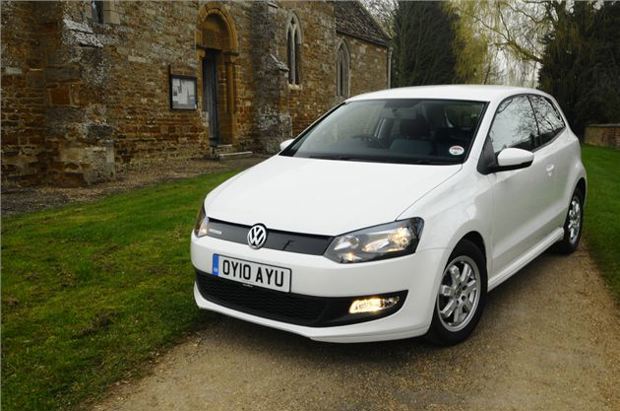
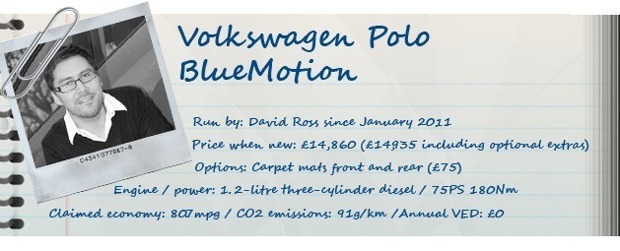
- Blue is the new green. And it's also white...
- Jekyll and Hyde
- The BlueMotion revolution
- Big Polo, little Golf
- Polo versus Polo
- The M25 Challenge: Part One
- The M25 Challenge: Part Two
- A right pain in the glass
- The mystery of the fixed boot carpet
- The tax-free Volkswagen
- TDI diesel din
- The final farewell to the Polo
Blue is the new green. And it's also white...
The greenest version in the Volkswagen line-up becomes the first car to be featured in the new 'our cars' section where we'll be running it for six months.

Date: 24 January 2011 | Current mileage: 6776 | Claimed economy: 80.7mpg | Actual economy: - mpg
Blue is now the new green if you own a Volkswagen. The German brand introduced the BlueMotion badge – to identify its cleanest and most efficient models – in 2007 and since then it has worked to improve economy and lower CO2 emissions even further. And at the moment the cleanest model in the Volkswagen line-up is the Polo BlueMotion, which we’ll be running for the next six months.
The idea with ‘Our Cars’ is to give a more in depth and long term view into what it’s like to own a car. So as well as the usual things you’d read in a review or road test, we’ll be covering pretty much everything and anything from how much it costs to run to whether you can fit a labradoodle in the back. And if there’s anything you’d like to know, you’ll be able to ask us in our regular live question and answer sessions.
And every two weeks we will be updating you on the progress of our cars and looking at the good and bad. As well as our Polo we have a Skoda Yeti – the most popular review on the site. It’s a Greenline model which for the uninitiated is Skoda’s version of Volkswagen’s BlueMotion models and although not as efficient as the smaller Polo, it still promises strong economy from its 1.6-litre TDI engine.
But back to the Polo. Volkswagen launched the current model in 2009 and it was well received by the critics. So much so that it won European Car of The Year for 2010. I know because there’s a big sticker in the back window as a little reminder everytime you look in the rearview mirror.
The award is well deserved though. This Polo is a considerable step up from its predecessor. It feels like a bigger car all round, not so much in size, but in terms of refinement and quality. In fact from a quick glance it’s pretty easy to mistake it for a Golf and it’s a similar story inside with a higher quality feel the interior. It’s even quite stylish.
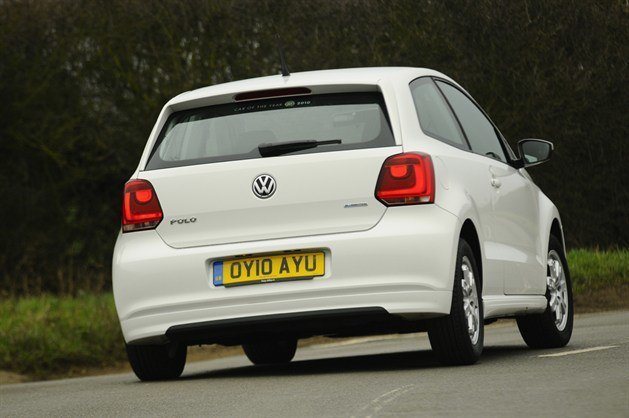
The BlueMotion model is powered by a 1.2-litre TDI diesel engine. It’s a three-cylinder unit that produces 75bhp – not much to get excited about but with 180Nm of torque there should be decent mid-range power. On paper the 0-62mph time of 13.9 seconds is best described as ‘leisurely’ but this Polo isn’t about performance of the acceleration kind, its forte is economy.
According to the official figures it can average an incredible 80.7mpg while even in urban driving Volkswagen says it will return 67.3mpg. This is one claim we’ll certainly be testing in the coming months when OY10 AYU (which for a Polo is appropriately finished in Candy White paint) will be covering plenty of motorway miles as well as the country roads around rural Rutland and Leicestershire.
The other key figure of the Polo is its CO2 output of just 91g/km – one of the lowest around. This means you pay zero VED plus it’s exempt from the central London congestion charge, although you do have to pay a £10 ‘registration’ fee, so the first trip into the zone isn’t quite ‘free’.
Our Polo is a three-door model but it isn’t bursting with optional extras. Quite the opposite in fact. The only extras fitted are front and rear carpet mats at a very reasonable £75. Aside from that it’s the standard BlueMotion specification which we’ll delve into in more detail in a future update.
What’s good so far:
The looks: I’ve only had a quick spin in the Polo so far but what impressed me initially was the styling. Okay, it’s no GTI, but the extra bodykit that the BlueMotion gets to improve aerodynamics does give it an inadvertently sporty appearance and although the white paintwork might not be to everyone’s taste I think it looks good on the three-door Polo.
And what’s not:
Engine noise: After the styling, the second thing that made an impression was the noise of the 1.2 TDI engine. The three-cylinder unit isn’t overly loud compared to other small diesels and there are certainly worse engines out there, but first thing in the morning it can sound a little like there’s some sort of farm machinery next to you.
Jekyll and Hyde
You'd expect an eco car with a modest engine to be good in town but not necessarily adept on the motorway. So perhaps our Polo is having an identity crisis?

Date: 7 February 2011 | Current mileage: 7207 | Claimed economy: 80.7mpg | Actual economy: 55.8mpg
You don’t expect many ‘green’ models to be thrilling to drive. And the Polo doesn’t dispel that myth. The rather noisy TDI engine hardly feels like a performance powerhouse, but then it’s not supposed to. This is a car designed to be frugal, efficient and friendly to Mr and Mrs Environment. But the Polo has a dark secret. It’s actually very nippy.
You won’t find this out if you only ever drive it in traffic or at low speeds. If anything you’d think the opposite was true. To help fuel economy the Polo is fitted with a tweaked five-speed manual gearbox which has possibly the longest first and second gears of any car I’ve ever driven. Despite being a diesel with reasonable torque, you do have to give it some revs when pulling away from a standstill, or it feels like it could stall.
But get it into third gear and the little Polo turns from mundane urban green machine into a little rocket. It pulls so well you can embarrass plenty of larger cars that perhaps think the BlueMotion should be ambling along at a sedate pace. And on the motorway it’s a genuine revelation. In fourth and fifth there’s plenty of power in reserve and it will happily cruise along at 70mph to 80mph with no problems. In fact it will go even quicker (unofficially of course) if you ask it, with no fuss.
It’s a decent long distance car despite the fairly modest torque figure of 180Nm and even overtaking is an option occasionally, if there’s a decent stretch of road ahead. It’s not exactly the most refined of motorway cruisers, but is reasonably quiet at a steady speed and you rarely need to change out of top gear.
This kind of driving also helps improve economy. On the country lanes where I live, the Polo is never going to be at its most economical. In fact for the first few weeks of driving it, I don’t think the automatic engine stop/start system ever got the chance to cut in. But some longer journeys on motorways and major A roads has helped push up economy to a respectable 55.8mpg in the past few days. Before that it seemed to be struggling to get above around 52mpg. Volkswagen says that in urban driving the Polo can average 67.3mpg.
Of course the temptation with cars that can feel a little sluggish is to constantly press hard on the accelerator in order to get some decent performance. The Polo responds much better to a bit of tlc. Encourage it up to speed – and into a higher gear – and it’ll reward you with stronger pace than you’d imagine along with better fuel economy too.
What’s good so far:
Motorway performance: The little Polo is a revelation on the motorway and is surprisingly swift in-gear, making the most of its moderate torque. This is where it has the advantage over green petrol models.
And what’s bad:
Gearing: The long first and second gear make driving in town or in traffic quite a chore, which is ironic given this is a ‘green’ model that’s fitted with an engine stop/start system specifically designed to take advantage of this kind of congestion in order to save fuel.
The BlueMotion revolution
Volkswagen's range of BlueMotion models is expanding (with new BlueMotion Technology versions) but are they worth paying a premium for?
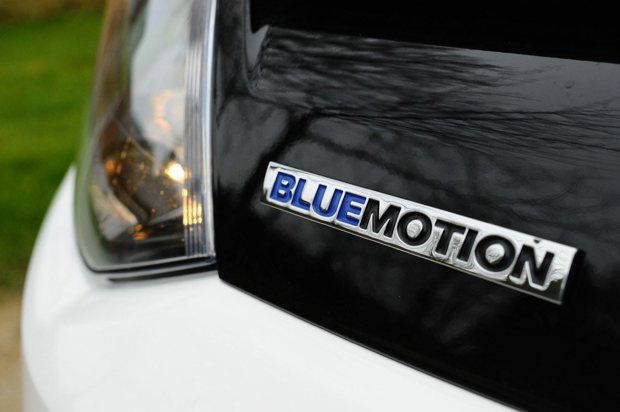
Date: 21 February 2011 | Current mileage: 7819 | Claimed economy: 80.7mpg | Actual economy: 56.7mpg
Working out which of Volkswagen’s models are the most efficient is pretty easy. The BlueMotion badge is given to the most efficient models in the line-up which use a variety of clever fuel-saving systems such as longer gearing and a stop/start system that cuts the engine when you come to a stop.
If you’ve never driven a car with stop/start before it can be a little odd at first and even now I do occasionally forget and think I’ve stalled it. It’s a fairly unobtrusive system though which is more impressive considering the Polo is fitted with a three-cylinder diesel engine which is naturally not as smooth as say a 1.4-litre four-cylinder petrol.
When you come to a stop (put the car into neutral and take your foot off the clutch) the engine automatically cuts out. And as soon as you start to put the clutch back down it restarts itself. There is a button to switch it off, although that does sort of defeat the object of having it in the first place!
The Polo BlueMotion also has a different grille to minimise wind drag (the cooling ducts usually mounted in the front bumper have been moved to underneath the car), a front splitter and a small rear wing. It also has sports suspension which is 15mm lower than a standard Polo, although this is not so much for handling prowess but more for aerodynamics.
It also gets a sports styling kit of sports bumpers, side skirts and a larger rear roof spoiler to aid wind flow and boost efficiency. The knock on effect is that it helps to distinguish the Bluemotion from other Polos and it certainly works. Look past the small 15-inch wheels and it has a sporty look that’s not that different from the Polo GTI (below left).
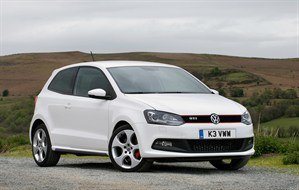

What can confuse matters somewhat is that in some ranges such as the Golf and Passat, Volkswagen offers ‘BlueMotion Technology’ models as well as BlueMotion models. So what’s the difference? Well not that much to be honest. BlueMotion Technology models have low rolling resistance tyres to enhance economy, as well as a multifunction computer which includes a gear change recommendation for optimum fuel consumption plus the stop/start system.
The full BlueMotion model adds aerodynamic changes along with revised gearing and a regenerative braking system which charges the battery while the vehicle is moving in order to reduce the workload of the engine and cut fuel consumption. It may not sound that much but it makes a key difference in a Golf, especially if you live in London. The full Golf BlueMotion model emits 99g/km of CO2 which means zero car tax and no central London congestion charge. The 1.6 TDI Bluemotion Technology model is still very frugal at 107g/km but will cost you £10 a day if you drive into the capital.
What’s good so far:
Economy: Okay, so it’s not at the 80.7mpg that’s claimed but then the driving I do tends to be on country roads so there’s lots of braking and accelerating which isn’t ideal for efficient driving. However 56.7mpg is still good and it’s steadily increasing all the time.
And what’s bad:
Stop/start: Not the actual system, just the fact that it so rarely gets to cut in on my journeys. Luckily there are a few trips to London due soon which should test it out a bit more.
Big Polo, little Golf
The latest Polo has far more in common with the Golf than ever before, both on the inside and out. In fact it's so good it's a genuine alternative to its large counterpart.
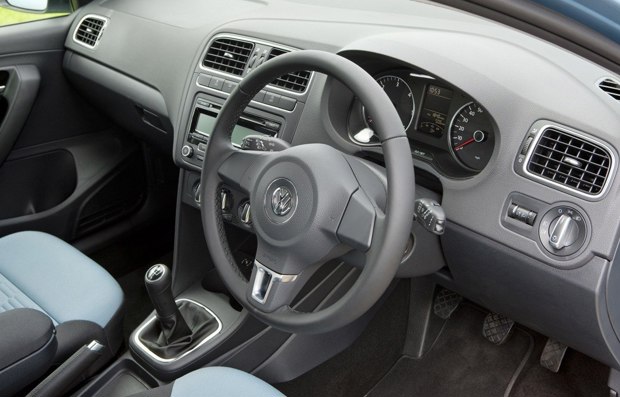
Date: 7 March 2011 | Current mileage: 8331 | Claimed economy: 80.7mpg | Actual economy: 57.4mpg
The previous Polo was somewhat the poor relation in the Volkswagen family. It never had that much in common with the rest of the range so although it was a worthy small car, there wasn’t too much to get excited about. That changed with the launch of the current Polo in 2009. The new car may still be compact hatchback, but it’s now so much improved that it’s a genuine alternative to a Golf. More than that, it’s one of the best small cars on the market.
The similarities are instantly evident from the outside and it’s quite easy at a glance to mistake the Polo for a Golf as you can see below (the Golf is on the left just so you're sure...). But perhaps the area where the biggest improvement has been made is the interior. The Polo is far more upmarket and comfortable than the old model and a lot more stylish too.


That's evident as soon as you get in, especially the steering wheel, that all important ‘first point of contact’ with the car. It’s a sporty three-spoke affair and in the BlueMotion gets a chrome insert and is trimmed in leather, as are the gear lever and handbrake. This extra certainly gives it a quality feel – only the top Polo SEL and GTI models get the same as standard.
There are plenty of soft touch plastics too plus the matt chrome trim on the air vents and door handles is another touch that lifts it above the norm. Few small cars this size offer such a quality interior. I like the easy to use stereo too with its big buttons and clear display. Having recently driven a SEAT Ibiza which has a much snazzier looking, but baffling to operate radio, the Polo is a welcome return to simplicity.
The blue backlighting is another nice touch but there’s a bit of an issue with the auxiliary input. It comes as standard on all Polo models apart from the entry-level S version and is handily set into the central console, next to the cupholders. The problem is interference. Play your iPod through it and there’s always an annoying buzzing in the background. It’s not loud but once you’ve heard it, you can’t ignore it. I’ve tried various iPods and cables but the problem won’t go away. So we’re sticking to the radio for now.
Another extra the BlueMotion gets is the centre armrest which doubles as a little storage area (the top of the armrest flips up to reveal a useful little space). The only problem is that while it’s quite handy on long motorway journeys, the rest of the time it seems to always be in the way. When it’s down you can’t change gear easily (in fact it’s a right struggle for me) and when you flip it up so it’s out of the way, you end up smacking your elbow on it.
Still, these are only minor complaints about what is a very comfortable and good quality car. The seats have really impressed me, despite their rather rental-car-esque blue cloth finish, known as Blue Merlin. An alternative Cirrus trim is available which is a very ordinary black but who wants boring anyway! The seats may not look that special but they’re very comfortable and surprisingly supportive too.
What’s good so far:
Refinement: The Polo doesn’t feel like a small car. The quality interior and its ability to happily cruise on the motorway without feeling strained mean it’s a genuine alternative to a Golf, only more economical.
And what’s bad:
Auxiliary input: The high-pitched interference isn’t loud but it’s the equivalent to a dripping tap. Once you hear it you can’t ignore it. I’ve tried everything to get rid of it (including a variation of bass, treble and volumes on both the stereo and my iPod) but to no avail. Any suggestions are very welcome!
Polo versus Polo
The Polo BlueMotion may be the cleanest model in the Volkswagen range but is it worth paying the extra over a normal 1.2 TDI Polo?
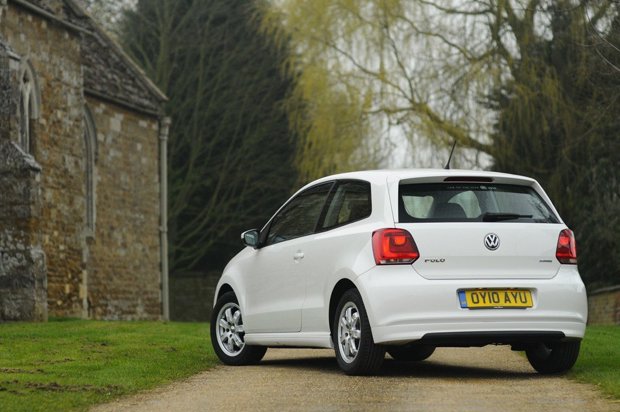
Date: 21 March 2011 | Current mileage: 8790 | Claimed economy: 80.7mpg | Actual economy: 58.9mpg
I mentioned Volkswagen's somewhat confusing BlueMotion and BlueMotion Technology model line-up in a previous update. Thankfully it’s a lot simpler in the Polo range as there's just one BlueMotion model available with three or five doors. But the big question is whether the BlueMotion is worth the extra over a standard Polo with the same 1.2 TDI engine?
The engine is no different with the same power and performance, the only differences are emissions, economy and of course – price. The BlueMotion currently costs £14,860 – that’s a substantial £1125 more than a Polo 1.2 TDI SE which is £13,735.
True it does come with extra equipment such as cruise control, front fog lights, the multifunction computer and a leather steering wheel as well as all the BlueMotion systems but that’s still a big price difference. In terms of economy the BlueMotion averages (according to the official figures) 80.7mpg - while the 1.2 TDI SE returns 72.4mpg. They’re still both amazing figures when you consider that only a few years ago more than 50mpg was seen as economical. But is an extra 8.3mpg worth the outlay?
The Polo BlueMotion is free to tax but the 1.2 TDI will only cost £20 a year at current VED rates. If you’re doing 10,000 miles a year, the BlueMotion will only save you £90.35 a year in fuel so even taking into account the difference in car tax, you’d still have to do more than 100,000 miles before you saw any return.
However if you to drive in central London and go in the congestion charge zone then it’s a whole different ball game. Thank to its sub-100g/km emissions, you don’t have to pay the daily rate of £10 saving you £2277 a year (there is a new system called CC Auto Pay which is £9 a time) if you drove in every day (weekends and bank holidays are free). So if you live or work in the capital, suddenly the BlueMotion makes a lot more sense.
| Model | Polo BlueMotion 1.2 TDI 3dr | Polo SE 1.2 TDI 3dr |
| Price | £14,860 | £13,735 |
| Average economy | 80.7mpg | 72.4mpg |
| CO2 emissions | 91g/km | 107g/km |
| Annual VED | £0 | £20 |
| 0-62mph | 13.9 seconds | 13.9 seconds |
| Annual cost of fuel* | £788.10 | £878.45 |
*at 10,000 miles a year and at current average cost of diesel of £1.40 per litre
What's good so far?
Interior build quality: Our Polo has done around 9000 miles now but still feels like new inside. The leather steering wheel is a very nice feature and i'm pleased there are no squeaks or rattles despite the poor quality roads the Volkswagen has to deal with.
And what's bad?
Engine noise: The 1.2 TDI unit may be a common rail engine but it shows no signs of getting any quieter. It does tend to shatter the peacefulness of a lovely Spring morning although once your on the move it's not as bad.
The M25 Challenge: Part One
So just how economical is our Polo BlueMotion? Well we're going to put it to the ultimate test as we see how many times we can 'lap' the M25...
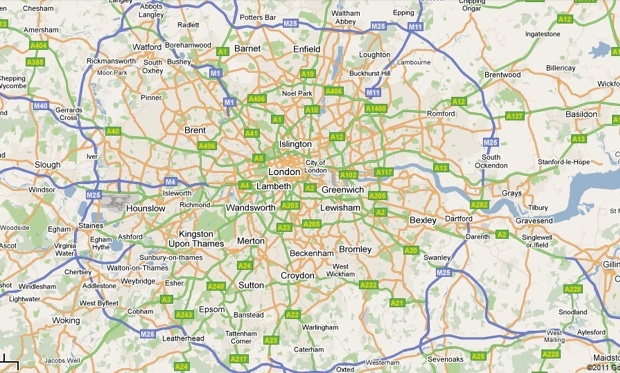
Date: 4 April 2011 | Current mileage: 9188 | Claimed economy: 80.7mpg | Actual economy: 57.7mpg
Economy is the new rock n' roll. Well, maybe not but it's fairly safe to say that with fuel looking ominously at a new pair of expensive shoes at not far off the £1.50 a litre mark, how many miles to the gallon you're doing has never been of so much interest to so many. While you can't control CO2 emissions and the VED rate you pay, you can affect your fuel economy in the way you drive.
So what is the Polo BlueMotion capable of? Well we're going to find out. But rather than do the usual 'economy drive' where you drive back from somewhere like Switzerland to the UK (think the traditional Top Gear challenge) where the roads are all quiet and traffic-free, we're going to do something a bit more realistic. Lapping the M25.
That's right, for some strange reason - probably that it seemed like a good idea at the time - i'll be filling the Polo up to the brim with diesel, pointing it round the M25 and driving continually until it (just about) runs out. What could be more fun? Well i'm sure all of you who have to regularly negotiate Britain's (and one of Europe's) busiest motorways could probably come up with a few ideas, but they're unlikely to be printable here.
Doing some simple maths (not my strong point) the Polo BlueMotion, with its 45-litre fuel tank, has a range of 799 miles if the Volkswagen claimed combined fuel consumption of 80.7mpg is anything to go by. I'm hoping that the Polo will be able to better this figure at a steady 60mph but there is of course the inevitable traffic which will slow me down and use more fuel. If the traffic is very bad, the engine stop/start system will be able to cut in, so that should at least save some fuel. The M25 is approximately 115 miles all told so i'm aiming for just about seven laps, although it will be tight....
To give myself a fighting chance i'll be starting at 6am but it will be a weekday so i'll have the usual rush hour traffic to contend with - twice. In terms of which way round to go it's probably pot luck but i'm plumped for clockwise in the hope that going across the Queen Elizabeth II bridge at the Dartford Crossing will be marginally less painful than the tunnel. Apart from that i'll be fuelled by Haribo, Diet Coke and a sense of adventure.
Obviously i'll try and drive economically, but I want the test to be quite realistic too, so there'll be no coasting or taking the spare wheel out of the boot to save weight and the air conditioning will be on when it's needed. How will I fare? Well you'll have for The M25 Challenge: Part Two to find out...
What's good so far?
The BlueMotion bits: My trip(s) around the M25 will really show just how good Volkswagen's fuel-saving BlueMotion technology is.
And what's bad?
This idea: It sounded quite fun when I was sitting at home. But now I'm beginning to wonder whether this was such a good plan...
The M25 Challenge: Part Two
We take on the might of the M25 in our frugal little Polo to find exactly how economical it can be. But how will it do? Read on to find out...
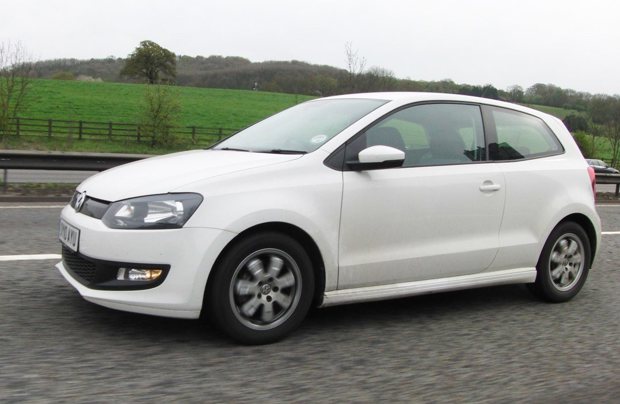
Date: 18 April 2011 | Current mileage: 10777 | Claimed economy: 80.7mpg | Actual economy: 76.4mpg
So here we are. It’s 5.30am, I’m sat at a very quiet South Mimms services and beginning to wonder when this was ever a good idea. Driving around the M25 – one of Europe’s busiest roads – on one tank of fuel until I run out. This is surely the ultimate in real world economy tests. But I’m confident the Polo has what it takes to perform well. Doing some rough maths the Polo has a range of 799 miles given its 45-litre fuel tank and an average claimed fuel economy figure of 80.7mpg. I’m hoping to better that with some gentle driving.
So I set off onto a very quiet M25 from South Mimms, heading clockwise which judging by the amount of traffic I saw later in the day heading in the opposite direction, was certainly a good idea. While I’m treating this as a real world economy test (so I’ve got the air conditioning on when needed and haven’t pumped up the tyres) I’m still being gentle on the accelerator, so when joining the M25 I’m very pleased there’s little traffic. Early doors I’m sticking to about 50mph so I can get a feel of what the Polo will average at a gentle speed, after all – I can always go quicker later if I have plenty of miles left, but can’t do the opposite.
While it may upset quite a few HGV drivers (apologies to all the truck drivers who had to overtake a leisurely Polo BlueMotion on the M25), it quickly pays dividends for economy and despite having the weight of a full tank of diesel on board, the Polo is averaging an incredible 94.6mpg which would give it an amazing range of 936 miles. Surprisingly it’s fairly traffic-free on the first lap – helped by the fact it’s the Easter holidays when there are about 20% fewer cars on the roads.
Still, at such a sedate pace it’s no surprise the first circuit, which is 119 miles if you’re interested, takes two hours and forty-five minutes. At this pace I’ll be here all day! So as I start the second lap I quicken the speed, keeping at a steady 60mph. The Polo BlueMotion actually feels smoother at this speed, it’s that ‘sweet spot’ you often find on engines where they just seem happy, and despite the increase in speed, average economy remains unchanged. It also means I can keep up with traffic (which is now getting busier) and not get in the way of HGVs. Of course there are the inevitable traffic problems building and the Darford tolls are far busier the second time around, while the usual queues around the M4 junction and up to the M1 are no surprise.

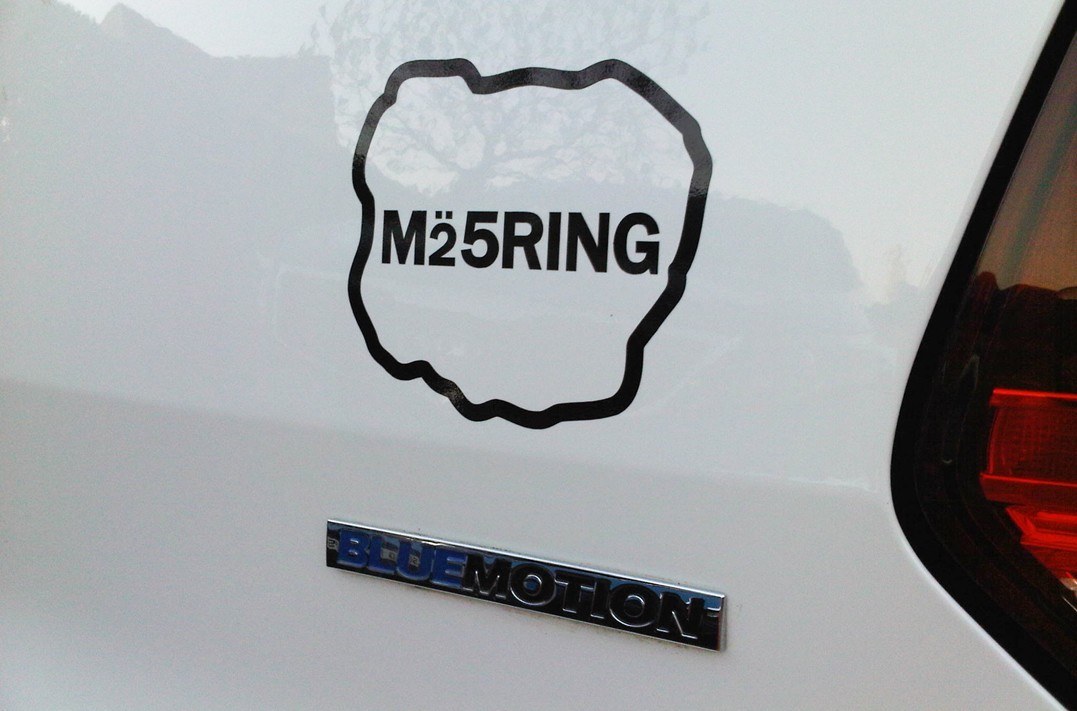
Going around a third and fourth time are fairly uneventful, apart from the confusion on the face of the man at the Dartford Tolls, who has now seen me for the fourth time in one shift. And I’m not sure which of us has the more tedious task. Although the boredom that’s starting to creep in is alleviated for a moment by the unusual sight of a Eurostar train being transported around the southern section and an altercation between a foreign truck which didn’t quite see a Mercedes-Benz E-Class as he was joining the motorway in traffic. Needless to say the Mercedes came off worst. The average speed has risen from 40mph to 47mph thanks to a concerted effort to keep it at 60mph where possible.
A combination of Diet Coke, bagels and Haribo sweets keep me going through the afternoon with only very brief ‘comfort’ breaks back at South Mimms services. That and Steve Wright on Radio 2. The fifth lap was a long one in terms of time, due mainly to the second rush hour of the day which saw me sitting in more queues leading up to the M4 which continue stop start all the way up to the A1 at junction 21. This does give the engine stop/start system plenty of opportunity to cut in, although not as much as you might expect as people tend to slowly crawl along rather than come to a complete halt.
And now we’re on to the sixth ‘lap’ of what Google Maps rather poetically calls, the 'Autoroute Britannique’. And as the sun begins to set – a sight which makes even the dreary M25 look faintly picturesque for a few minutes – things start to get nervy. The range is showing 235 miles – enough for one more lap and only a few miles shy of the two which would give the seven I was aiming for. So I slow things up slightly and as the traffic starts to thin out and it gets later, I drop down to about 55mph and help myself to a bit of slipstreaming behind articulated lorries.


The penultimate lap is fairly uneventful although by this time I am getting more than a little tired and wondering what on earth possessed me to do this. I suppose it seemed like a good idea at the time! And finally, after what's been a very long day, I start on the what will be the seventh and final lap. The range says 100 miles to go as I pass South Mimms - not enough to do one more lap, but i'm hoping that with an even lighter right foot I might just do it. Running out of fuel at this time of night would not exactly be enjoyable.
Despite my best attempts the range seems to be doing it's best to steadily decrease and we I pass the junction for the M41 it finally goes to 0 miles. It's now squeaky bum time. I'm praying that the Polo has enough - even after the range has expired - to cover the final few miles. I think this is what is known as 'range anxiety' and it's a stressful feeling. But I needn't have worried, as the Polo covers the last few miles without missing a beat, although pulling back into South Mimms for the final time it does feel like the BlueMotion is on fumes.
And that's it! SEVEN complete circuits of the M25 on just ONE tank of fuel thanks to an average of 84.6mpg - an incredible figure given the stop start traffic we encountered. That's a total of 834.5 miles, although it was very tight at the end and I did wonder whether the Polo and I had bitten off more than we could chew. Thankfully the BlueMotion and its frugal 1.2 TDI engine proved amazingly economical showing that with a careful bit of driving, it is sometimes possible to achieve - and better - the claimed economy figures manufacturers' print.

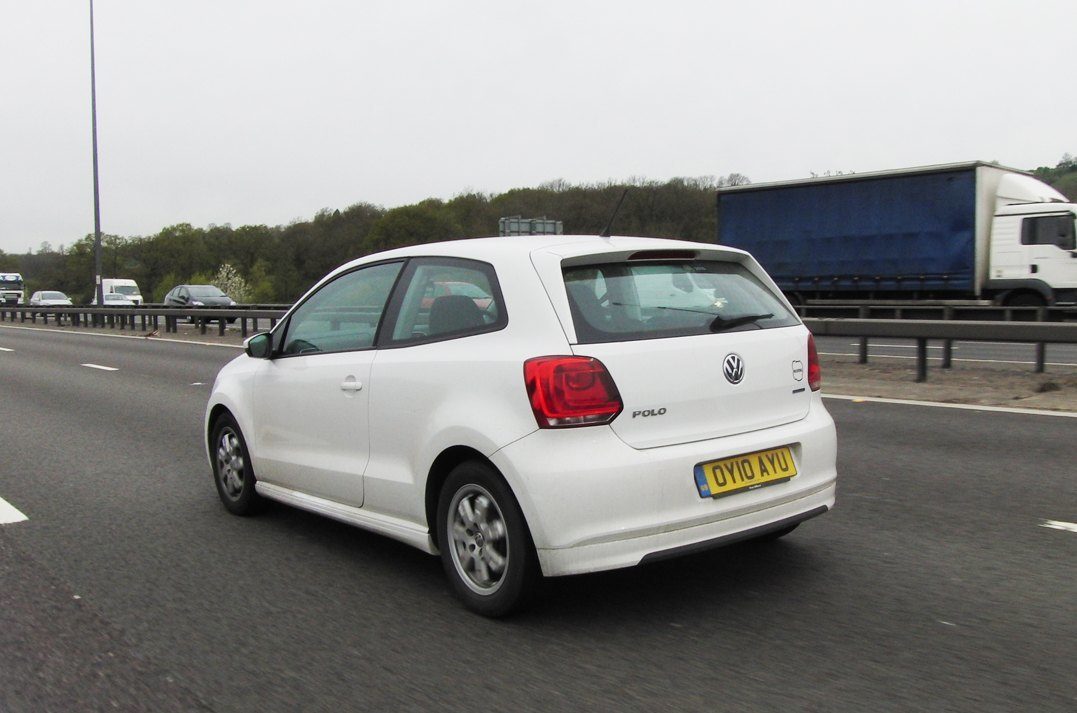
M25 Challenge in numbers:
7 laps of the M25
46mph average
834.5 miles in total
0 miles range at the end (!)
84.6mpg average
16 hours 20 minutes driving time
£10.50 in tolls
1 tank of fuel
A right pain in the glass
Getting a chip in your windscreen is always annoying. But it seems to be an occupational hazard when you live in a rural area, where a chip very quickly becomes a crack.

Date: 2 May 2011 | Current Mileage: 11271 | Claimed economy: 80.7mpg | Actual Economy: 61.4mpg
I seem to get my fair share of stone chips in windscreens. Maybe I'm just lucky or maybe it's my driving style of moving along a road in an orderley fashion, minding my own business. Who knows. But invariably if there's a piece of the road surface airborne, i'll somehow manage to collide with it. It's bad enough when it comes off the bonnet (a real problem with the Honda Civic I had a few years ago due to its sloping design at the front end) but there's that sinking feeling when it smacks off the windscreen.
The noise is bad enough but while you frantically try to locate the point of impact (made more difficult for me as my car rarely has a clean windscreen) you're usually praying that it's left no more than a mark. Of couse the moment I heard that sound of a stone bouncing off the front of the Polo I knew that sod's law meant I had a chip and sure enough there was a neat, almost perfectly round chip in the bottom left hand corner of the windscreen.
Not the end of the world I thought. After all it wasn't in the driver's view and unless you looked very hard, it wasn't particularly noticeable. The problem is I live in a rural area. It's not bandit country but most journeys involve b-roads and often single-lane roads with passing places. It looks lovely but road 'debris' is an everyday hazard. As are farm vehicles. And it was while following a tractor and trailer along a little lane that this big mean stone leapt up and went straight for the Polo.
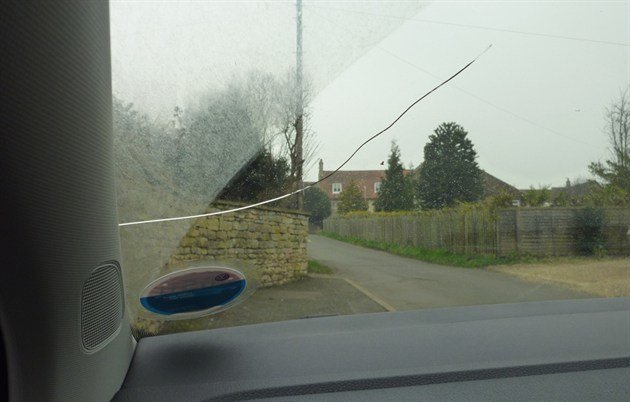
Dealing with tight bends and poorly surfaced roads puts the Polo under a lot of stress. And so what quickly started out as a chip became a crack. And it grew and grew. Like a weed making its way across the windscreen. Still, i've seen those adverts with Gavin from Autoglass so went online and made an appointment. About 10 minutes later a very helpful fella phone me up and we were all set.
Well sort of. Autoglass did turn up - eventually. The first time they went to the wrong address but didn't phone me to tell me that. So I was in limbo for a few days. I thought i'd let them phone me first, a bit like after a first date. Only I gave in after a week (I was never good at playing hard to get) and called them. So to cut a long story short Autoglass eventually got to me.
For some strange reason, the company insurance which covers the Volkswagen Polo doesn't include windscreen cover, so I would have to pay for it myself. Not a problem you think - after all, how much can a windscreen for a Polo be. Well stand by your beds because the answer is more than £700....
That's not a misprint. It is seven hundred pounds. Yes, I know. Anyway, after some 'negotiating' we got it down to around £580, give or take a few shillings. At least the technician came to my house and carried out the work very quickly and efficiently so that after about 40 minutes the Polo was as good as new - in fact you wouldn't even realise the windscreen had been replaced. He even put the tax disc holder back straight.
Still, that's a hefty price for a bit of glass. I can't even begin to imagine how much a replacement would cost for something like a Citroen C4 Picasso that has a panoramic windscreen or for a BMW that has a head-up display and requires a specially designed windscreen (it's thicker at the bottom apparently).
What's good so far?
New windscreen: It's nice and shiny, plus Autoglass replaced it quickly and with no problems.
And what's bad?
The cost: £580. Ouch! And that was AFTER some negotiating.
The mystery of the fixed boot carpet
A small leak from a diesel can in the boot highlights an annoying problem with the Polo's fitted boot carpet.
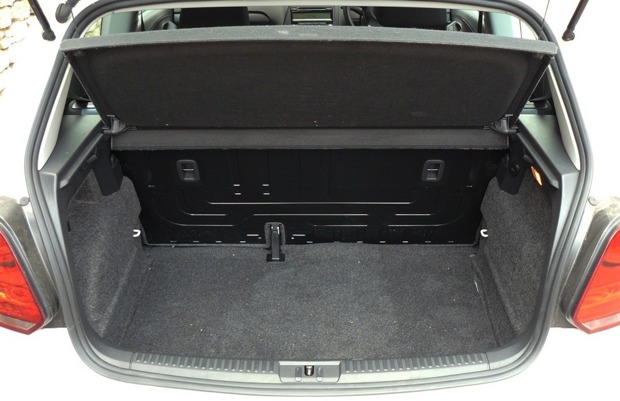
Date: 16 May 2011 | Current mileage: 11602 | Claimed economy: 80.7mpg | Actual economy: 60.9mpg
After the delirium that was the M25 challenge, life has been a lot quieter for our Polo as it returns to the daily grind of life in the countryside. Apart from dodging the odd suicidal pheasant and having to deal with mud-strewn lanes (thank you again local farmers...), it's all been sedate stuff. It's been a bit too quiet if anything. So cue something going awry.
It seems I may have forgotten about the five-litre jerry can (are you still allowed to call them that?) of diesel I had in the boot from the M25 challenge. My 'safety net' as it were, in case I ran out of fuel on the M25 itself. Despite my best cap screwing, a few too many robust cornering manouevres had seen the inevitable happen and it had leaked. Not much, maybe 250ml or so, but enough to create a big diesel patch on the boot carpet.
Now while this is annoying, it's not too much of a hassle. Usually you'd take the carpet out, clean it with something like Flash All Purpose (other cleaning brands are available) let it dry and Bob's your uncle - like new. Sort of. And as the Polo was starting to smell bit strongly of diesel at this point - and as the sun was shining - i thought I'd give it a thorough clean inside, including the offending boot spillage.

But it quickly becomes apparent that there's one big stumbling block. Because the boot carpet doesn't actually come out. It's seemingly fixed in place by the rear seats. Not a problem, you think, after all there must be SOME way it comes out. But no, the carpet is fitted around the metal base of the rear seats and despite various lifting and folding and shoving, there is no way that carpet is leaving the confines of the boot.
So I had to clean it in situ. Not that easy when what I was hoping to do was hit it with a pressure washer and leave it to dry in the sun. I did the best I could with it in place, without soaking the whole boot with water, using a bit of Flash and washing up liquid, before drying it with kitchen towels. Then I left the tailgate open for a few hours in the hope the warm temperatures would help it dry.
However, it still doesn't feel properly clean and there is that lingering greasiness from the diesel. I've cleaned it several times now but the fact you can't take the carpet out really limits what you can do. It also means the interior of the car smells - a combination of diesel and cleaning products which creates a delightful aroma reminiscent of the cross channel ferries my family regularly used in the 1980s. Higher specification Polo models get a split level boot floor which you can remove, but our BlueMotion isn't as fortunate. And while it's only a small detail, it's one that's very annoying.
What's good so far?
The interior: It's well put together, comfortable and is wearing well considering our Polo is almost 12 months old and fast approaching 12000 miles.
What's bad?
The boot carpet: Why is it not removable? It seems a very old fashioned design on what is a very modern car.
The tax-free Volkswagen
It's the end of May and time to renew the car tax on our Polo. And the pleasant news is that it will cost absolutely nothing.
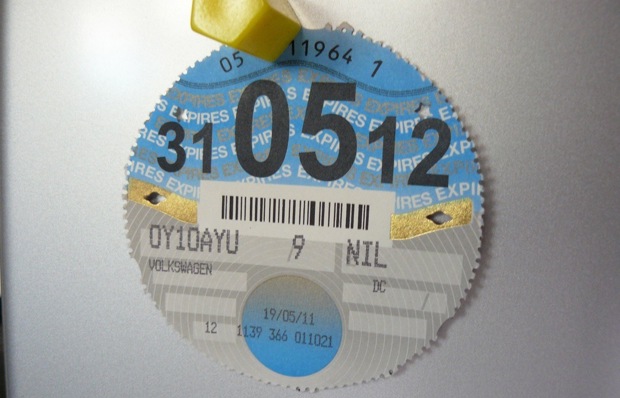
Date: 30 May 2011 | Current mileage: 11865 | Claimed economy: 80.7mpg | Actual economy: 62.6mpg
Gettting bills through is never enjoyable. Unless you somehow end up in credit, to which the usual response is to ask why you've been paying too much and then immediately get your monthly direct debit lowered. Even though you know that in six months time, you'll end up owing more again. But never mind. Utility bills are a part of life, just as car tax (or VED - that's vehicle excise duty if you're in the slightest bit interested) is an inevitable part and parcel of owning a car.
As with insurance, maintenance, fuel and repairs, car tax is all part of a vehicle's running costs. Now if you own an older car - one registered before 1 March 2001 - there are simply two bands. If the engine is less than 1549cc it will cost you £130 for 12 months tax. Anything over that size and it's a hefty £215 a year. If you're not sure what band your car is in - or if you're thinking of buying a new car and want to know how much the annual tax will cost you, we have a handy guide on our car tax page.
Of course, from 2001, the Goverment introduced a VED system based on CO2 emissions rather than engine size. Whether you see it as fair on owners of older cars or not, the idea is to reduce CO2 emissions from vehicles by penalising those with inefficient cars and giving an incentive to people who buy greener cars. Like the Polo BlueMotion. As it emits less than 100g/km of CO2 it qualifies for zero car tax which means your annual tax disc costs you absolutely nothing. Am I feeling smug? Very much so!
You still need to have a physical tax disc (the car is registered after all), but the fact you don't have to hand any money over does feel very enjoyable indeed. So we have another 12 months of tax for the Polo at the cost of £0. Our Polo is far from alone in being free to tax - the 99g/km figure is a target for all car manufacturers as it makes models more attractive to drivers looking to save as much money as possible but crucially helps the brands to lower their average CO2.
By 2015, new EU regulations stipulate that the industry must reduce average CO2 emissions from new cars sold in Europe to 130g/km. Last year’s average was 140.9g/km, down from 145.9g/km in 2009. Manufacturers which fail to meet these targets could face fines, so lowering emissions as possible in green models is a good way of balancing this out. It also helps firms justify having performance models - in Volkswagen's case it would be the likes of the Golf R.
This helps explain why the Polo actually emits 91g/km of CO2. There is also the possibility that with so many cars now emitting less than 100g/km of CO2, the Government may in the future change the VED bands, lowering the amount of CO2 a car emits before it's free to tax.
TDI diesel din
The 1.2-litre TDI engine in the Polo may be 'characterful' but it shows no signs of getting quieter even after 12,000 miles.
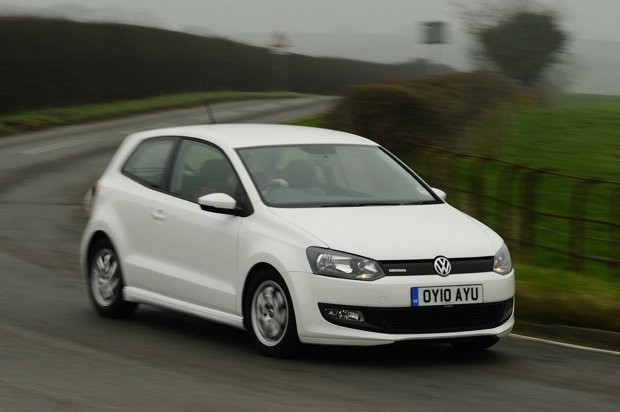
Date: 13 June 2011 | Current mileage: 12033 | Claimed economy: 80.7mpg | Actual economy: 61.8mpg
There's a lot to like about the Polo BlueMotion. I think it looks good (despite the oddly small wheels), I like the interior and it's incredibly fuel efficient - just as you'd expect. I may not be getting too close to the official 80.7mpg but at more than 60mpg it's still impressive given that most of my driving is on rural lanes so I'm pretty much always accelerating or braking.
However, there's one thing that I don't like - the engine noise. The little 1.2-litre TDI may not use much fuel but it certainly makes a din. The fact it's a three-cylinder engine doesn't help, that gives it an unusual thrum which only adds to the noise. It does have 'character' but unfortunately that's often overtaken by the sheer engine volume, particularly when you increase the revs.
For the first few months I was fairly forgiving of it, hoping that it would quieten down with more miles on the clock. But after more than 12,000 miles it's as noisy as it ever was. Get it on the motorway and it's not too bad, especially as the Polo barely ticks over at 70mph, but as soon as you have to slow down and then accelerate again, there's no getting away from the diesel clatter.
I suppose I should be happy that it's a newer common rail TDI engine and not one of the older PD (which stands for Pumpe Duse if you're at all interested) TDIs from Volkswagen. While they gave good performance, they were noisy and the power delivery wasn't particularly smooth from low revs. So you could find yourself slowing down for a roundabout, for example, finding it clear and pulling away in second gear, only to find yourself with no power before a sudden burst of torque as the revs picked up.
The common rail TDI engines which Volkswagen started fitting in its cars around 2008 to replace the PD units, are far quieter and have a much more linear power delivery. They certainly give a better sense of refinement from behind the wheel and there's less vibration through the pedals too. There is decent insulation in the Polo so it's not excessively noisy inside, but compared to something like a 1.4-litre petrol engine, the 1.2 TDI sounds gruff, especially on start-up.
The final farewell to the Polo
After six months, it's time to say goodbye to the Polo. And it will be sorely missed.
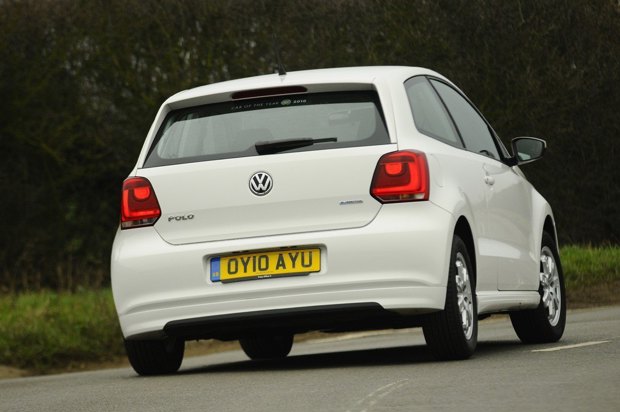
Date: 5 July 2011 | Current mileage: 13181 | Claimed economy: 80.7mpg | Actual economy: 58.7mpg
Amazingly it’s already been six months since our Polo BlueMotion arrived but now it’s time to say goodbye. In that time it’s covered around 6500 miles, plenty of which were racked up on our M25 challenge where we managed to circumnavigate the UK’s most infamous motorway seven times – about 830 miles in total - on just one tank of fuel.
I’ve certainly been impressed by the Volkswagen Polo. On paper the 1.2 TDI three-cylinder engine with just 75bhp doesn’t exactly look thrilling, but it’s a surprisingly nipper performer when you want it to be, particularly on the motorway where it seems most at home. It’s also a good looking car and feels a lot more grown up than the previous Polo. But what’s impressed us most in the last six months and what hasn’t?
What's been good?
Fuel economy: Admittedly the Polo BlueMotion has rarely achieved the 80.7mpg claimed figure during its time with us, although on the M25 economy challenge we did manage to get it up to 84.6mpg with lots of gentle driving. The overall average for the six months was 58.7mpg which is still a good figure given the kind of driving I do – mainly country roads with plenty of bends, inclines and tractors to negotiate. The stop start system saves fuel in traffic too or if you’re waiting at a junction or roundabout. It’s a good system and restarts quickly and fairly smoothly too.
Quality: The Polo feels like a significantly bigger car than it is and I’ve had several friends who have jumped into the passenger seat and mistaken it for a Golf. The interior is more upmarket than the previous Polo with a nicer steering wheel and a better quality feel to all the switches and a neat stereo system too. The seats could do with more support but are still comfortable and it’s a car you can happily spend many an hour in.
Motorway performance: You’d expect an economical car like the Polo BlueMotion to be designed primarily for driving in towns and cities, where the engine stop/start system can do its thing. The problem is that because of such a long first gear, it’s not great away from the lights and needs more revs than you think. Conversely, it’s surprisingly good at higher speeds, where you’d expect it to struggle. Although it only has 180Nm of torque it pulls very strongly and is great from 50mph up to 70mph so even the odd bit of overtaking is do-able and it’s very happy on the motorway.
What's been bad?
Engine noise: It’s what you’d expect from a small diesel engine, but that doesn’t mean the 1.2 TDI unit gets any quieter. Early morning starts risk annoying the neighbours as the three-cylinder engine clatters into life and compared to Volkswagen’s larger four-cylinder common rail diesels, this smaller powerplant seems decidedly noisy. It’s not too bad when you’re up to speed, but pulling from low revs results in a gruff noise, however at least there’s not too much in the way of vibration in the interior.
Um, and that’s really about it. The Polo BlueMotion has been a great performer during its time with us and shows that ‘green’ cars needn’t be dull or slow. A petrol Polo may be a better choice if you’re doing lots of short journeys as it’s cheaper to begin with and the difference in everyday fuel economy won’t actually be that big. But we’d choose the BlueMotion because of its extra torque which is ideal for overtaking, plus the low emissions mean you can say you’re doing your bit for the environment in a very smug way. We’re sad to see it go.
